Brass Quintets
Brass Catalog
- p.1 (Ab - Am)
- p.2 (Am - At)
- p.3 (Au - Ba)
- p.4 (Ba - Ba)
- p.5 (Ba - Ba)
- p.6 (Ba - Ba)
- p.7 (Ba - Ba)
- p.8 (Ba - Be)
- p.9 (Be - Bi)
- p.10 (Bi - Br)
- p.11 (Br - Br)
- p.12 (Br - By)
- p.13 (By - Ch)
- p.14 (Ch - Co)
- p.15 (Co - De)
- p.16 (De - De)
- p.17 (De - Du)
- p.18 (Du - Ev)
- p.19 (Ev - Fi)
- p.20 (Fi - Fr)
- p.21 (Fr - Ga)
- p.22 (Ga - Ge)
- p.23 (Ge - Go)
- p.24 (Go - Gr)
- p.25 (Gr - Ha)
- p.26 (Ha - Ha)
- p.27 (Ha - Ha)
- p.28 (Ha - He)
- p.29 (He - Ho)
- p.30 (Ho - Ho)
- p.31 (Ho - Je)
- p.32 (Je - Jo)
- p.33 (Jo - Ki)
- p.34 (Ki - La)
- p.35 (La - Lo)
- p.36 (Lo - Ma)
- p.37 (Ma - Ma)
- p.38 (Ma - Me)
- p.39 (Me - Me)
- p.40 (Me - Mo)
- p.41 (Mo - Mo)
- p.42 (Mo - Mu)
- p.43 (Mu - Ne)
- p.44 (Ne - Pa)
- p.45 (Pa - Pe)
- p.46 (Pe - Po)
- p.47 (Po - Pu)
- p.48 (Pu - Re)
- p.49 (Re - Ro)
- p.50 (Ro - Sa)
- p.51 (Sa - Sc)
- p.52 (Sc - Sh)
- p.53 (Sh - So)
- p.54 (So - St)
- p.55 (St - St)
- p.56 (St - Tc)
- p.57 (Tc - Tr)
- p.58 (Tr - Tr)
- p.59 (Tr - Tr)
- p.60 (Tr - Tr)
- p.61 (Tr - Tr)
- p.62 (Tr - Tr)
- p.63 (Tr - Va)
- p.64 (Va - Va)
- p.65 (Va - Va)
- p.66 (Va - Va)
- p.67 (Va - Va)
- p.68 (Va - Va)
- p.69 (Va - Va)
- p.70 (Va - Ve)
- p.71 (Ve - Wa)
- p.72 (Wa - We)
- p.73 (We - Wr)
- p.74 (Wr - Zu)
- Next >
-
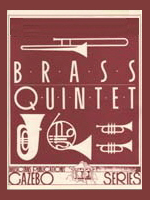
-
Holcombe, Bill
American Suite (Holcombe Jr.) [211.01]
20th Century.
Category: Brass Quintets
Item: 087138
Grade: Advanced
Price: $22.50
Availability: Ships in 10 to 15 Days - View Shopping Cart
-
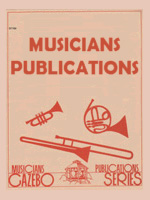
-
Holcombe, Bill
Autumn Afternoon (Holcombe Jr.) [211.01]
20th Century.
Category: Brass Quintets
Item: 088210
Grade:
Price: $8.00
Availability: Ships in 10 to 15 Days - View Shopping Cart
-

-
Holcombe, Bill
Blue Monday (Holcombe Jr.) [211.01]
Category: Brass Quintets
Item: 114459
Grade:
Price: $15.00
Availability: Usually Ships in 24 Hours - View Shopping Cart
-

-
Holcombe, Bill
Blues for Five (Holcombe Jr.) [211.01]
20th Century. An original work for brass quintet in three contrasting movements. Includes a stright-ahead 4, a ballad, and a jazz waltz. Score & parts. (score sample pages)
(score sample pages)
Category: Brass Quintets
Item: 094331
Grade: Intermediate
Price: $20.00
Availability: Ships in 10 to 15 Days - View Shopping Cart
-
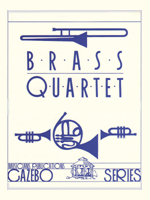
-
Holcombe, Bill
Bossa Latao (Holcombe Jr.) [211.01]
Score & parts. (score sample pages)
(score sample pages)
Category: Brass Quintets
Item: 122684
Grade: Intermediate
Price: $15.00
Availability: Ships in 10 to 15 Days - View Shopping Cart
-

-
Holcombe, Bill
Cowboy Rhapsody [Medley] - 2nd edition (Holcombe Jr.) [211.01]
American. Medley of the folk tunes Along the Chisholm Trail; Red River Valley; Home on the Range; Bury Me Not on the Lone Prarie; Streets of Loredo; Get Along Little Doggies. Score & parts. (score sample pages)
(score sample pages)
Category: Brass Quintets
Item: 081019
Grade: Intermediate
Price: $20.00
Availability: Ships in 10 to 15 Days - View Shopping Cart
-

-
Holcombe, Bill
Fanfare & Toccata (Holcombe Jr.) [211.01]
For standard 211.01 brass quintet (2 trumpets, 1 horn, 1 trombone, 0 euphoniums, 1 tuba). Duration: 2:45 minutes. (score sample page)
(score sample page)
Category: Brass Quintets
Item: 109846
Grade: Grade 5 - Early Advanced
Price: $15.00
Availability: Usually Ships in 24 Hours - View Shopping Cart
-

-
Holcombe, Bill
Festive Sounds of Hanukkah [211.01]
Traditional Jewish (Hannukah / Chanukah). Medley of Maoz Tusr (Rock of Ages); Mi Y'Malel (Who Can Retell?); Hannukah, Hannukah; My Dreidel; Spin, Dreidel (S'Vion); Hannukah, O Hannukah. Score & parts. (score sample pages)
(score sample pages)
Category: Brass Quintets
Item: 096365
Grade:
Price: $20.00
Availability: Usually Ships in 24 Hours - View Shopping Cart
-

-
Holcombe, Bill
Firefly (Holcombe Jr.) [211.01]
Score & parts. (score sample page)
(score sample page)
Category: Brass Quintets
Item: 115550
Grade:
Price: $15.00
Availability: Usually Ships in 24 Hours - View Shopping Cart
-

-
Holcombe, Bill
Fuga Jazza (Holcombe Jr.) [211.01]
20th Century.
Category: Brass Quintets
Item: 085473
Grade: Grade 5 - Early Advanced
Price: $18.00
Availability: Ships in 10 to 15 Days - View Shopping Cart
-

-
Holcombe, Bill
Looney Tunes [211.01]
TV. Medley with introduction of three popular cartoon tunes from the Warner Brothers Looney Tunes television series of the 1950's thru 1970's. Each tune is clearly set apart from the others, though transitions are made to move from one to another. Includes This Is It; The Merry Go Ground Broke Down; Merrily We Roll Along.
Category: Brass Quintets
Item: 070653
Grade: Intermediate
Price: $20.00
Availability: Ships in 10 to 15 Days - View Shopping Cart
-

-
Holcombe, Bill
March Imperial (Holcombe) [211.01]
20th Century. Score & parts. (score sample pages)
(score sample pages)
Category: Brass Quintets
Item: 066262
Grade:
Price: $15.00
Availability: Ships in 10 to 15 Days - View Shopping Cart
-

-
Holcombe, Bill
Morning, from The American Suite [211.01]
20th Century.
Category: Brass Quintets
Item: 069765
Grade: Intermediate
Price: $15.00
Availability: Usually Ships in 24 Hours - View Shopping Cart
-

-
Holcombe, Bill
Pick Up Six (Holcombe, Jr) [211.01 w/opt drums]
Brass quintet with optional drum set.
Category: Brass Quintets w/Percussion
Item: 138123
Grade: Advanced
Price: $18.00
Availability: Usually Ships in 24 Hours - View Shopping Cart
-

-
Holcombe, Bill
Sapphire (Holcombe Jr.) [211.01]
Light Samba featuring solo trumpet and trombone at times.
Category: Brass Quintets
Item: 122077
Grade: Intermediate
Price: $15.00
Availability: Usually Ships in 24 Hours - View Shopping Cart
-

-
Holcombe, Bill
Seville for a Day [211.01]
20th Century. Original uptempo 3/4 tune in a Spanish style.
Category: Brass Quintets
Item: 080944
Grade: Grade 5 - Early Advanced
Price: $15.00
Availability: Ships in 10 to 15 Days - View Shopping Cart
-

-
Holcombe, Bill
Siesta in Seville [211.01]
20th Century. Original tune in moderate 3/4 with a strong Spanish flair.
Category: Brass Quintets
Item: 080943
Grade: Advanced
Price: $15.00
Availability: Ships in 10 to 15 Days - View Shopping Cart
-

-
Holcombe, Bill
Variations on Happy Birthday (Holcombe Jr.) [211.01]
Score & parts. (score sample pages)
(score sample pages)
Category: Brass Quintets
Item: 112846
Grade: Intermediate
Price: $15.00
Availability: Usually Ships in 24 Hours - View Shopping Cart
-

-
Holcombe, Bill & Bill Holcombe Jr.
My Dreidle Variations [211.01 or 202.01]
20th Century. Jewish (Hanukkah / Chanukah). Variations on a popular Jewish tune. Trombone substitute for horn included. Score & parts. (score & trumpet 1 sample pages)
(score & trumpet 1 sample pages)
Category: Brass Quintets
Item: 074608
Grade: Advanced
Price: $18.00
Availability: Usually Ships in 24 Hours - View Shopping Cart
-

-
Holcombe, Bill & Bill Holcombe Jr.
Variations on an Echo Carol [211.01]
Baroque. Christmas. 21st Century. Though the composer is not named in this edition, the carol mentioned in the title is clearly "Joy to the World" by GF Handel. This arrangement takes that simple tune and runs it through some harmonic and rhythmic alterations.
Category: Brass Quintets
Item: 072517
Grade: Intermediate
Price: $15.00
Availability: Ships in 10 to 15 Days - View Shopping Cart
-

-
Holcombe, Bill Jr
Marianne [211.01 w/optional drums]
Category: Brass Quintets w/Percussion
Item: 119444
Grade: Intermediate
Price: $15.00
Availability: Usually Ships in 24 Hours - View Shopping Cart
-
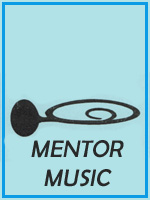
-
Holden, Oliver
Coronation - All Hail the Power of Jesus' Name (Frost/Keith) [211.01]
Straight forward setting of the classic Christian hymn tune by Oliver Holden and Robert Frost. Score & parts. (score sample pages)
(score sample pages)
Category: Brass Quintets
Item: 105988
Grade: Intermediate
Price: $9.95
Availability: Usually Ships in 24 Hours - View Shopping Cart
-
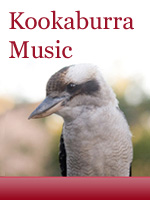
-
Holley, Alan
Canzona for Ligeti [211.01]
20th Century.
Category: Brass Quintets
Item: 086656
Grade:
Price: $49.95
Availability: Ships in 10 to 15 Days - View Shopping Cart
-
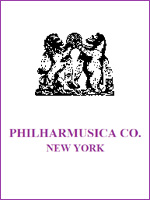
-
Holst, Gustav
Blacksmith Ayre (1911) (Block) [211.01]
A combination of two movements from the popular band Suites - the Song of the Blacksmith and I'll Love My Love.
Category: Brass Quintets
Item: 130734
Grade: Intermediate
Price: $13.50
Availability: Ships in 20 to 30 Days - View Shopping Cart
-
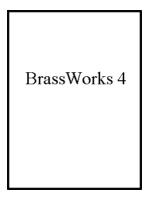
-
Holst, Gustav
Chaconne, from First Suite in Eb (Anderson) [211.01]
20th Century. Slow movement from the popular concert band work.
Category: Brass Quintets
Item: 084325
Grade:
Price: $15.00
Availability: Ships in 6 to 9 Days - View Shopping Cart
-

-
Holst, Gustav
Christmas Day - Fantasy of Old Carols [211.01]
20th Century. Parts only. (trumpet 1 & horn sample pages)
(trumpet 1 & horn sample pages) #christmas
Category: Brass Quintets
Item: 003204
Grade:
Price: $17.50
Availability: Usually Ships in 24 Hours - View Shopping Cart
-
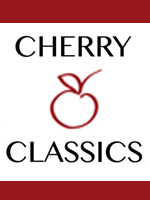
-
Holst, Gustav
Christmas Day - Fantasy of Old Carols (La Fratta) [211.01 w/organ]
Christmas Day, Fantasy on Old Carols for Brass Quintet and Organ by Gustav Holst has been beautifully arranged by Mark J. La Fratta. Written by Holst in 1910 for the music students of Morley College, this work is absolutely delightful to perform and to listen to. It includes the following carols: 1. Good Christian Men Rejoice, 2. God Rest You Merry Gentlemen, 3. Come Ye Lofty, Come Ye Lowly, and 4. The First Nowell. The instrumentation is for standard Brass Quintet (2 Trumpets in B-flat, Horn in...
Read More
Category: Brass Quintets w/Organ
Item: 136496
Grade: Advanced
Price: $36.45
Availability: Usually Ships in 24 Hours - View Shopping Cart
-
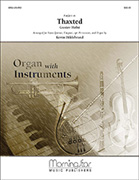
-
Holst, Gustav
Fanfare on Thaxted (Hildebrand) [211.01 w/organ & optional perc]
For brass quintet, timpani, opt. percussion and organ. (sample pages)
(sample pages)
Category: Brass Quintets w/Organ & Percussion
Item: 096476
Grade:
Price: $30.00
Availability: Usually Ships in 24 Hours - View Shopping Cart
-

-
Holst, Gustav
In the Bleak Midwinter (Fernie) [211.01]
Christmas.#christmas
Category: Brass Quintets
Item: 136083
Grade:
Price: $40.95
Availability: Usually Ships in 24 Hours - View Shopping Cart
-

-
Holst, Gustav
In the Bleak Midwinter (McCrady) [211.01]
In the Bleak Midwinter is a Christmas carol based on a poem by Christina Rossetti, published in 1872. Holst set it to music in 1906 and it has become the most popular of the many settings. Matt McCrady's arrangement for brass quintet is tender and rich in sound, appropriate for moderately advanced performers and is about 5 minutes in length. Instrumentation is for 2 trumpets in B-flat, horn in F, trombone and tuba. Score & parts. -the publisher (score sample pages) #christmas ...
Read More
Category: Brass Quintets
Item: 119477
Grade:
Price: $24.95
Availability: Usually Ships in 24 Hours - View Shopping Cart
-
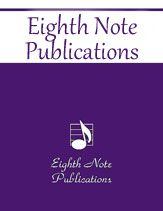
-
Holst, Gustav
In the Bleak Midwinter (Ferguson) [211.01]
20th Century (1906). Christmas. An original carol by English composer Gustav Holst. (score & parts)#christmas
Category: Brass Quintets
Item: 095475
Grade:
Price: $15.00
Availability: Ships in 6 to 9 Days - View Shopping Cart
-

-
Holst, Gustav
In the Bleak Midwinter (Block) [211.01]
20th Century (1906). Christmas. An original carol by English composer Gustav Holst. Score & parts.#christmas
Category: Brass Quintets
Item: 058493
Grade:
Price: $17.50
Availability: Ships in 20 to 30 Days - View Shopping Cart
-
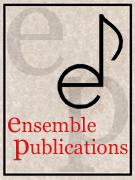
-
Holst, Gustav
Jupiter Chorale, from The Planets (DePaolo) [211.01]
20th Century. The stately chorale section from the Jupiter movement of The Planets is extracted for standard brass quintet. The tune starts in the first trumpet and is passed and shared amongst the upper four voices. In this arrangement, the chorale "ends" with a full cadence, unlike the original where the chorale segues into a scherzo recapitulation. Makes a great processional. A variation on this setting was used as the bridal march at the arranger's wedding. Includes an optional repeat and a c...
Read More
Category: Brass Quintets
Item: 060000
Grade:
Price: $15.00
Availability: Ships in 10 to 15 Days - View Shopping Cart
-
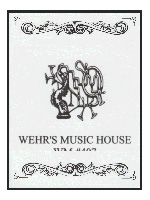
-
Holst, Gustav
Jupiter's Theme, from The Planets (Stewart) [211.01]
20th Century. Score & parts. (score sample pages)
(score sample pages)
Category: Brass Quintets
Item: 047568
Grade:
Price: $7.50
Availability: Usually Ships in 24 Hours - View Shopping Cart
-

-
Holst, Gustav
Jupiter, from The Planets (Jones) [211.01]
Score & parts. (score sample pages)
(score sample pages)
Category: Brass Quintets
Item: 110284
Grade:
Price: $15.00
Availability: Usually Ships in 24 Hours - View Shopping Cart
-
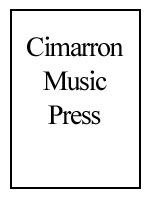
-
Holst, Gustav
Jupiter, from The Planets (Sutherland) [211.01 w/organ]
20th Century. Transcription of the entire movement from The Planets. Score & parts. (score sample pages)
(score sample pages)
Category: Brass Quintets w/Organ
Item: 101822
Grade:
Price: $45.00
Availability: Usually Ships in 24 Hours - View Shopping Cart
-

-
Holst, Gustav
Mars (Reprise) (Jones) [211.01]
Category: Brass Quintets
Item: 110281
Grade:
Price: $15.00
Availability: Ships in 30 to 45 Days - View Shopping Cart
-
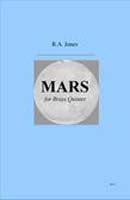
-
Holst, Gustav
Mars, The Bringer of War, from The Planets (Jones) [211.01]
Score & parts. (score sample pages)
(score sample pages)
Category: Brass Quintets
Item: 110283
Grade:
Price: $15.00
Availability: Usually Ships in 24 Hours - View Shopping Cart
-

-
Holst, Gustav
Medley of Seven Scottish Airs (Haynor) [211.01]
Includes: The Women are a?gane Wud; My Love?s in Germany; O How Could Ye Gang, Lassie; Stu Mo Run; We Will Take the Good Old Way; O Gin I Were Where Gowdie Rins; Auld Lang Syne.
Category: Brass Quintets
Item: 084327
Grade:
Price: $18.00
Availability: Ships in 6 to 9 Days - View Shopping Cart
-

-
Holst, Gustav
Moorside Suite, A (Wick) [211.01]
20th Century. Optional flugelhorn in place of trumpet. Score & parts. (score sample pages)
(score sample pages)
Category: Brass Quintets
Item: 058050
Grade:
Price: $42.95
Availability: Ships in 4 to 6 Days - View Shopping Cart
-

-
Holst, Gustav
Moorside Suite, A (LaFratta) [211.01]
A Moorside Suite by Gustav Holst was composed in 1927 as a work for brass band, commissioned by the BBC for the National Brass Band Festival Competitions at the Crystal Palace. The suite comprises three movements - Scherzo, Nocturne, and March. (Wikipedia)The success of this work encouraged many other British composers of the era to write for the brass band. - the publisher
Category: Brass Quintets
Item: 137842
Grade: Grade 5 - Early Advanced
Price: $47.95
Availability: Usually Ships in 24 Hours - View Shopping Cart
-

-
Holst, Gustav
Perfect Fool, Suite from (Decker) [211.01]
"The Perfect Fool Suite" by Gustav Holst is a ballet in one act composed by Gustav Holst in 1918-22. It tells the story of a jester who is appointed as advisor to the King, but ultimately leads him to his downfall due to the Fool's own foolishness and lack of understanding of the King's needs. The music is characterized by its playful and whimsical nature, featuring colorful orchestration and lively dance rhythms. Holst's use of folk melodies and modal harmonies creates an otherworldly atmosphere...
Read More
Category: Brass Quintets
Item: 136869
Grade: Advanced
Price: $29.45
Availability: Ships in 10 to 15 Days - View Shopping Cart
-

-
Holst, Gustav
Suite No 1 in Eb, op 28a [First Suite] (Bergler) [211.01]
20th Century. Transcription utilizing standard brass quintet instrumentation, with optional E-flat transposition on the first trumpet. Appropriate for the advanced amateur, university or professional level ensemble. Trombone part utilizes both tenor & bass clefs. -cdp (Chaconne score sample 1) (Chaconne score sample 2) (Intermezzo) (March) ...
Read More
Category: Brass Quintets
Item: 043123
Grade: Grade 4 - Intermediate
Price: $38.45
Availability: Ships in 20 to 30 Days - View Shopping Cart
-
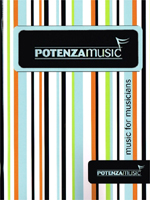
-
Holst, Gustav
Suite No 1 in Eb, op 28a [First Suite] (Brown) [211.01]
20th Century. Transcription of the popular British military band work. Appropriate for the advanced amateur, university or professional level ensemble. Trombone part in bass clef. Score & parts. (score sample pages)
(score sample pages)
Category: Brass Quintets
Item: 093517
Grade: Intermediate
Price: $29.95
Availability: Usually Ships in 24 Hours - View Shopping Cart
-

-
Holst, Gustav
Suite No 2 in F, op 28b [Second Suite] (Sabourin) [211.01]
20th Century. Transcription of the famous concert band piece. Movments entitled: March; Song Without Words; Song of the Blacksmith; Fantasia on the "Dargason". Score & parts. (score sample pages)
(score sample pages)
Category: Brass Quintets
Item: 065419
Grade: Advanced
Price: $38.45
Availability: Ships in 10 to 15 Days - View Shopping Cart
-
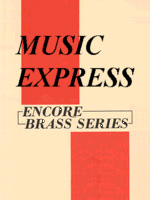
-
Holst, Gustav
Suite No 2 in F, op 28b [Second Suite] (Nowak) [211.01]
20th Century. Complete transcription of the highly popular concert band work. Score & parts. (score sample pages)
(score sample pages)
Category: Brass Quintets
Item: 029814
Grade:
Price: $25.00
Availability: Ships in 6 to 9 Days - View Shopping Cart
-
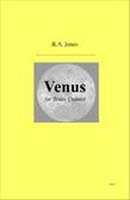
-
Holst, Gustav
Venus, from The Planets (Jones) [211.01]
Score & parts. (score sample pages)
(score sample pages)
Category: Brass Quintets
Item: 110282
Grade:
Price: $15.00
Availability: Ships in 30 to 45 Days - View Shopping Cart
-
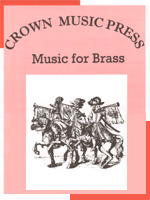
-
Hopkins, James
Brass Quintet No 1 [211.01]
Category: Brass Quintets
Item: 122319
Grade:
Price: $15.00
Availability: Ships in 10 to 15 Days - View Shopping Cart
-

-
Hopkins, John Henry
These Three Kings, They Like to Swing (Meeboer) [211.01 w/optional drum set]
Christmas. We Three Kings has been set here as an upbeat, jazz waltz. The tuba, trumpet 2, and horn introduce a variation of the traditional `oom-pa-pa' feel of a waltz. The melody is passed between the trombone and trumpet 1. Something a little different in the Christmas gig books. -the publisher#christmas
Category: Brass Quintets w/Percussion
Item: 099334
Grade:
Price: $15.00
Availability: Ships in 6 to 9 Days - View Shopping Cart
-
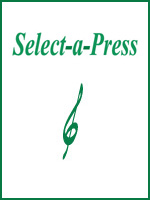
-
Hopkins, John Henry
We Three Kings of Orient Are (Slechta) [211.01]
Christmas. Wayne Bergeron series. Funky groove. Score & parts. -the publisher#christmas
Category: Brass Quintets
Item: 090604
Grade:
Price: $20.00
Availability: Usually Ships in 24 Hours - View Shopping Cart
- p.1 (Ab - Am)
- p.2 (Am - At)
- p.3 (Au - Ba)
- p.4 (Ba - Ba)
- p.5 (Ba - Ba)
- p.6 (Ba - Ba)
- p.7 (Ba - Ba)
- p.8 (Ba - Be)
- p.9 (Be - Bi)
- p.10 (Bi - Br)
- p.11 (Br - Br)
- p.12 (Br - By)
- p.13 (By - Ch)
- p.14 (Ch - Co)
- p.15 (Co - De)
- p.16 (De - De)
- p.17 (De - Du)
- p.18 (Du - Ev)
- p.19 (Ev - Fi)
- p.20 (Fi - Fr)
- p.21 (Fr - Ga)
- p.22 (Ga - Ge)
- p.23 (Ge - Go)
- p.24 (Go - Gr)
- p.25 (Gr - Ha)
- p.26 (Ha - Ha)
- p.27 (Ha - Ha)
- p.28 (Ha - He)
- p.29 (He - Ho)
- p.30 (Ho - Ho)
- p.31 (Ho - Je)
- p.32 (Je - Jo)
- p.33 (Jo - Ki)
- p.34 (Ki - La)
- p.35 (La - Lo)
- p.36 (Lo - Ma)
- p.37 (Ma - Ma)
- p.38 (Ma - Me)
- p.39 (Me - Me)
- p.40 (Me - Mo)
- p.41 (Mo - Mo)
- p.42 (Mo - Mu)
- p.43 (Mu - Ne)
- p.44 (Ne - Pa)
- p.45 (Pa - Pe)
- p.46 (Pe - Po)
- p.47 (Po - Pu)
- p.48 (Pu - Re)
- p.49 (Re - Ro)
- p.50 (Ro - Sa)
- p.51 (Sa - Sc)
- p.52 (Sc - Sh)
- p.53 (Sh - So)
- p.54 (So - St)
- p.55 (St - St)
- p.56 (St - Tc)
- p.57 (Tc - Tr)
- p.58 (Tr - Tr)
- p.59 (Tr - Tr)
- p.60 (Tr - Tr)
- p.61 (Tr - Tr)
- p.62 (Tr - Tr)
- p.63 (Tr - Va)
- p.64 (Va - Va)
- p.65 (Va - Va)
- p.66 (Va - Va)
- p.67 (Va - Va)
- p.68 (Va - Va)
- p.69 (Va - Va)
- p.70 (Va - Ve)
- p.71 (Ve - Wa)
- p.72 (Wa - We)
- p.73 (We - Wr)
- p.74 (Wr - Zu)
- Next >
More Options
- Use our Custom Order Page to special order items you can't find.
- Use our Catalog Order Page to order items from a printed catalog, or if you already know our catalog number for the item(s) you're interested in.
- And as always, feel free to E-mail us with your questions!
